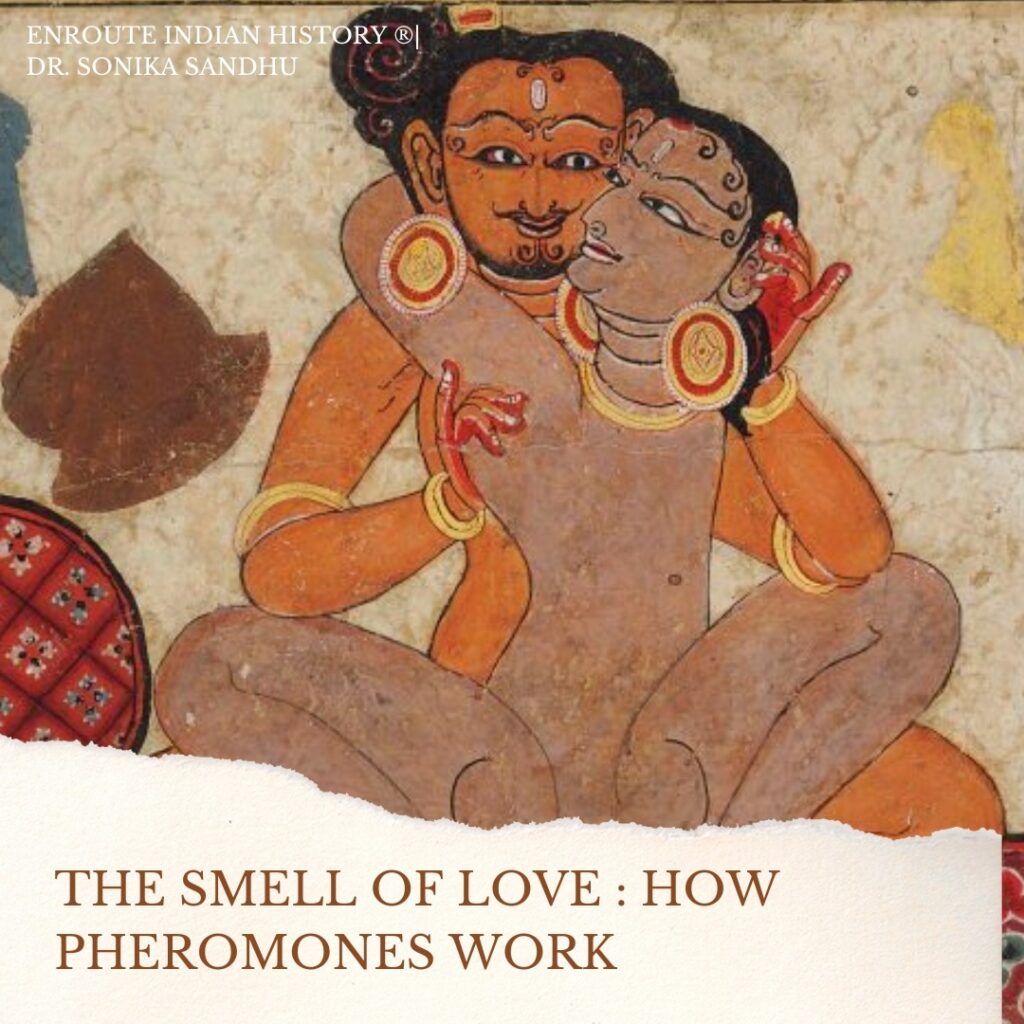
Article Written By EIH Subject Matter Expert
Dr. Sonika Sandhu
The sense of smell is one of the first and foremost sensory developments. We smell before we see. This fact remains as one of the primal and most instinctive amongst various species of the animal kingdom. From a new born sniffing is way to its mother to a predator getting a whiff of its dinner to the prospect of alluring a particular mate. The sense of smell if basic and common to all.
A key role in the olfactory world is played by pheromones. To state simply a pheromone is a chemical that an animal produces which changes the behaviour of another animal of the same species. Some describe pheromones as behaviour-altering agents. The term “pheromone” was coined by Peter Karlson in 1959 after the discovery of the first pheromone, Bombykol. Bombykol is secreted by female moths and is designed to attract males. The pheromone signal can travel enormous distances, even at low concentrations. Pheromones today are commonly used in insect control. They can be used as bait to attract males into a trap, prevent them from mating, or to disorient them.
Many people do not know that pheromones trigger other behaviours in the animal of the same species, apart from just sexual behaviour. They may be used to trigger or initiate bonds between mother and offspring, delineating territories, warning another animal to back off during a stand-off, raising an alarm, signalling a food trail, and the most common one triggering sexual arousal.
They are four basic types of pheromones : releaser, primer, signaller and modulator.
Signaller pheromones are mainly social chemo signals: they provide information on the hierarchy and the animal’s place in it, and on the type of food recently consumed by other animals and thus the nearby availability of food. They are also important for mate selection. Modulator pheromones influence neuropsychological parameters. While these effects are difficult to gauge in animals, they are the focus of most human studies. Finally, primer pheromones affect (neuro)-endocrine parameters, including the menstrual cycle. Since endocrine changes generally modulate neuropsychological parameters, modulator and primer pheromones likely overlap.
There are many interesting examples of how pheromones effects the behaviour of other animals are, such as the pig pheromone androstenone and related steroids is produced by the male pig (boar) Androstenone causes dogs that are barking/jumping in an excited state to immediately stop barking. It also stops dogs from begging and generally lowers their excitability. It also causes a calming effect on horses. Horses that are “head shy” will resist the human hand touching their head. This makes it difficult to put on a halter or bridle. One shot of androstenone (1 ug/mL) to the nostril of a head shy horse will make it calmer. The handler will be able to place a halter or bridle on the horse. Other applications include horses that are afraid of trailers or other novel environments.
Pheromones are widely used to promote aggregation. Among social insects such as termites and ants, several different pheromones may transmit the various messages needed to coordinate the complex activities of a colony. Some ants lay scent pheromones along a trail leading to a food source so that other members of the colony can find the food.
Some animals use scent to identify members of their family! The mule deer has scent glands on its hind legs right above its hooves. Young deer will often identify their mothers by sniffing at the glands.
Domestic cats have scent glands near their mouths, on their foreheads and at the base of their tails. They use these glands to mark territory. When other cats smell the scent they know that another cat has marked its territory.
Snakes use their forked tongues to “taste” or collect pheromones of prey animals that are in the air. They have receptors in the roof of their mouths that help them taste and smell the pheromones.
Pheromones in humans may be present in bodily secretions such as urine, semen or vaginal secretions, breast milk and potentially also saliva and breath, yet most attention thus far has been directed toward axillary sweat. The axillary secretions originate from the highly dense eccrine and apocrine (which secrete into hair follicles) sweat glands and sebaceous glands. The secretions are odourless but apocrine sweat acquires odour after interaction with the cutaneous bacterial microflora. Odour dispersal is modulated by several factors including clothing layers, axillary temperature, total hair surface, arm movements and the proximity of one’s nose. The main components of sweat are simple organic acids (Hays 2003, Verhaeghe et al 2013). The human female’s sensitivity to musk like odours is greatest around the time of ovulation, which some researchers interpret as proof of the ancestral presence of a musky pheromone in the male.
So next time trust your sense of smell with your eyes closed. Whiff away.
References:
Verhaeghe, J., Gheysen, R. and Enzlin, P., 2013. Pheromones and their effect on women’s mood and sexuality. Facts, views & vision in ObGyn, 5(3), p.189.



















